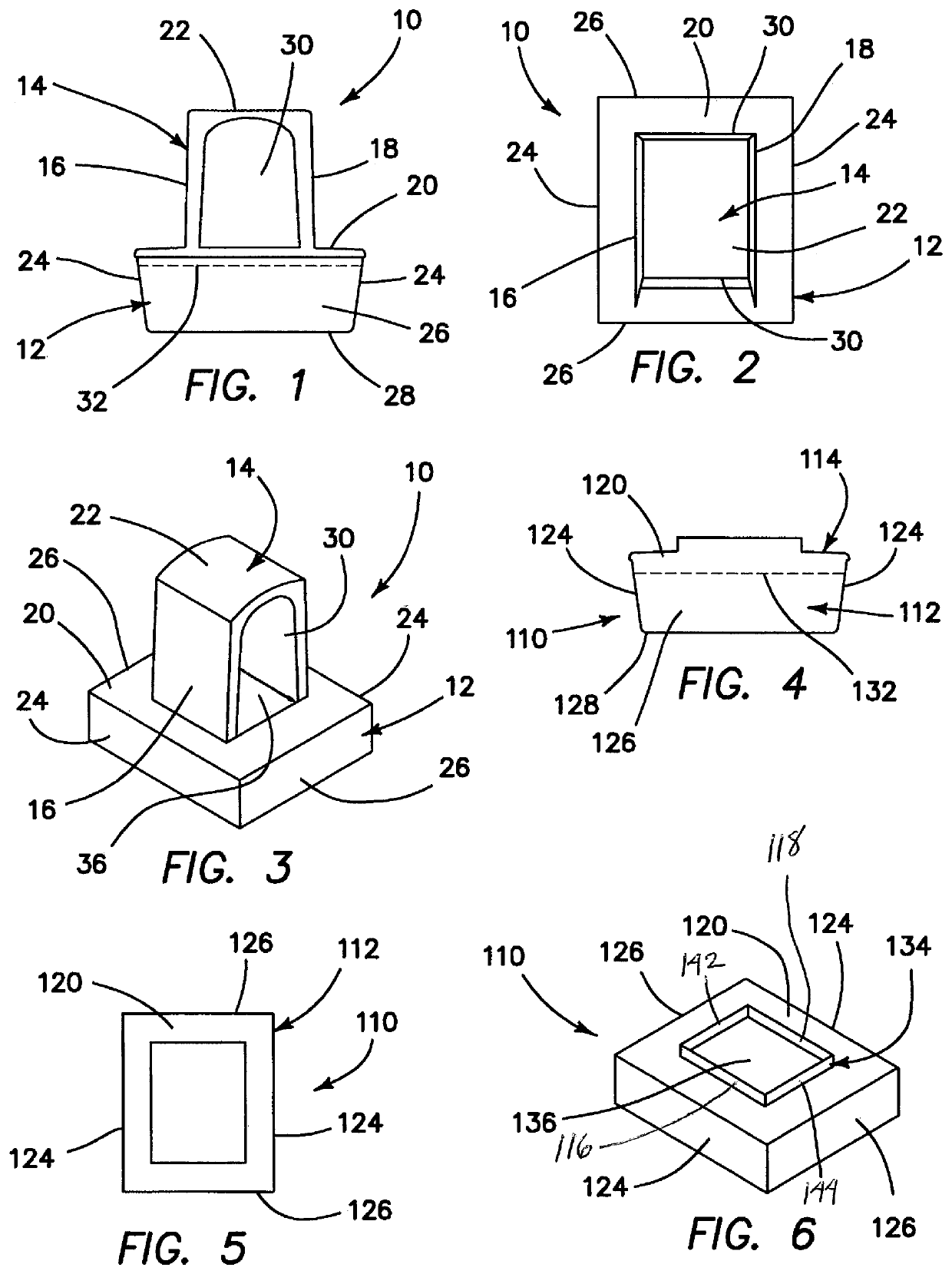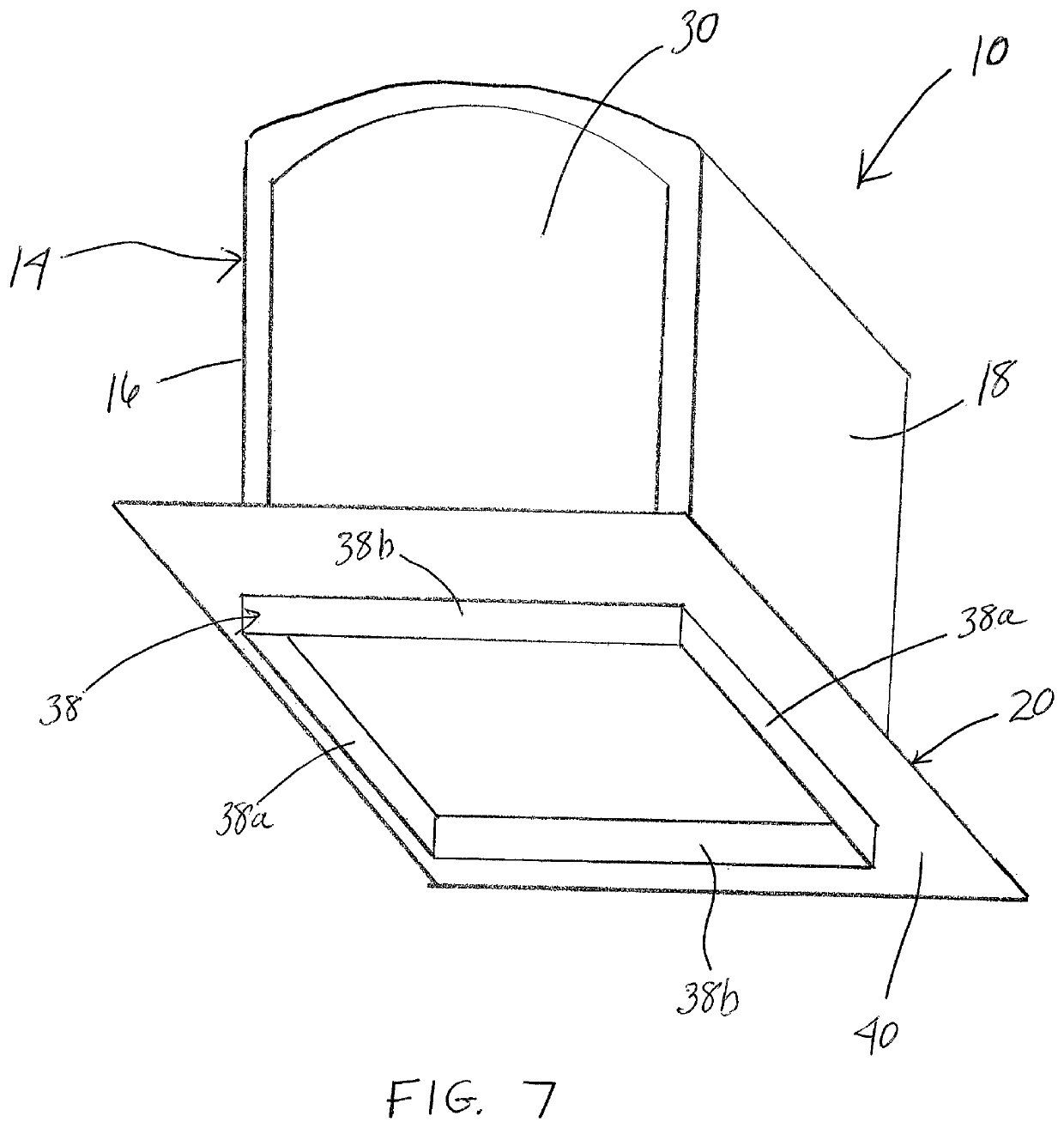Litter box system and methods
- Summary
- Abstract
- Description
- Claims
- Application Information
AI Technical Summary
Benefits of technology
Problems solved by technology
Method used
Image
Examples
Embodiment Construction
[0025]Referring now more particularly to the drawings, an embodiment of a litter box 10 for facilitating clean-up of pet waste is illustrated in FIGS. 1-3. The litter box 10 is constructed of a tray section 12, to which a cover section 14 is attached.
[0026]An important aspect of the invention is the particular construction of the cover section 14, which forces the pet to relieve itself in the center portion of the tray section 12. More particularly, the cover section 14 includes a hood portion comprising opposed side walls 16, 18 upstanding from a base portion 20 and joined by a roof portion 22. The tray section 12 is formed of two opposed side walls 24 which are joined by two opposed end walls 26 and a tray floor 28. The tray section is open at its top, and its interior volume is adapted for containing a supply of litter material, such as sand or special purpose litter. The cover section 14 is physically securable to the tray section 12, by plastic or metal clips, hook and loop fas...
PUM
 Login to view more
Login to view more Abstract
Description
Claims
Application Information
 Login to view more
Login to view more - R&D Engineer
- R&D Manager
- IP Professional
- Industry Leading Data Capabilities
- Powerful AI technology
- Patent DNA Extraction
Browse by: Latest US Patents, China's latest patents, Technical Efficacy Thesaurus, Application Domain, Technology Topic.
© 2024 PatSnap. All rights reserved.Legal|Privacy policy|Modern Slavery Act Transparency Statement|Sitemap


